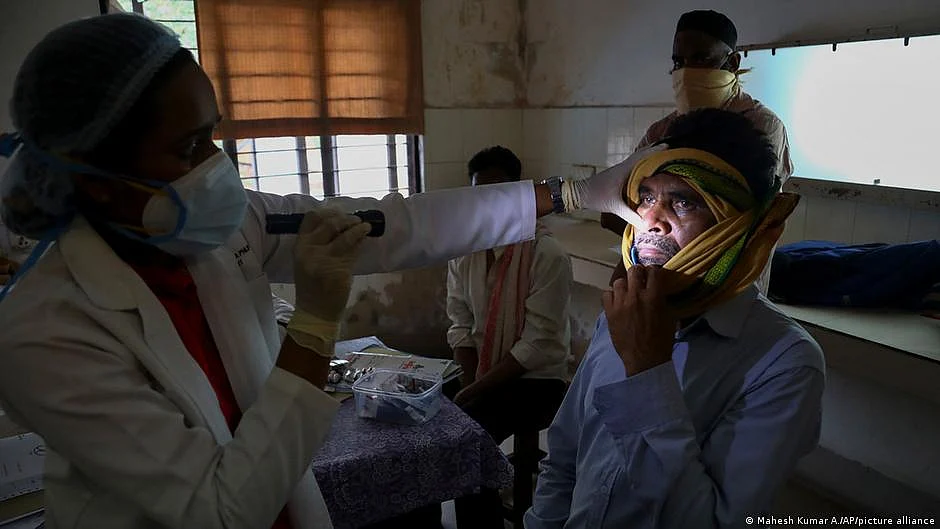Public health must be a fundamental right in India
The National Health Policy 2017 made a leap forward to corporate-centric and insurance-based healthcare system. It also pushed 2.5% GDP spending on health further to the year 2025

That out of a population of one lakh in our country, 32 persons die due to tuberculosis every year is a matter of grave concern and shame. Recently we have seen death of large number of children having fallen prey to dengue fever and encephalitis in Uttar Pradesh. Similar is the situation with diarrhoea, malaria and many other communicable diseases.
Needless to mention the havoc caused by the Covid pandemic where we failed to prevent several thousand deaths because of mismanagement and skewed priorities. It is not only the communicable diseases; the non-communicable diseases too are on the rise.
It is estimated that 29.8 percent of Indians have hypertension, with 33 per cent prevalence in urban and 25 per cent in rural India. As of 2017, India had 72.9 million diabetes patients-second only to China (114.3 million), and is soon likely to become the diabetes capital of the world. About one in every two Indians (47 per cent) living with diabetes is unaware of their condition, and only about a quarter (24 per cent) manage to bring it under control. Rural men with low household wealth and low education levels had a higher incidence compared to other groups. Nearly 26 people die of diabetes per 100,000 population.
All this requires a comprehensive health planning by the state with resolve to provide equitable healthcare to the citizens. The World Health Organisation (WHO) has termed “The enjoyment of the highest attainable standard of health is one of the fundamental rights of every human being without distinction of race, religion, political belief, economic or social condition”.
Despite the fact that India is an active participant in the WHO affairs, health has not been declared as a fundamental right in our country till date. Hence the citizen does not have a right to challenge the government in the court of law for its failure to meet health needs of the people.
The references to the state’s responsibility to health of the people are mentioned in the directive principles in Part IV of the Indian Constitution.
There has been a paradigm shift in the approach from the first National Health Policy, 1983 which emphasized on promotive, preventive curative and rehabilitative services. The National Health Policy, 2002 shifted its emphasis towards the provision of healthcare through private sector and opening up secondary and tertiary level healthcare for private investment.
The spirit and principles of Primary healthcare was compromised by shirking the responsibility for health by the public sector. This resulted in a setback to the equitable distribution of health for the people.
The National Rural Health Mission was launched in 2005. It was later extended to urban areas also as National Urban Health Mission in 2011. Consequently, the two were merged as National Health Mission in year 2013. However, implementation of national health mission remained fragmentary and half-hearted.
The National Health Policy (NHP) 2017 however made a leap forward to corporate-centric and insurance-based healthcare system. It also highlighted on strategic purchase of non govt. secondary and tertiary care services. Insurance system was further strengthened and as a result public funds are diverted to the private insurance and healthcare sector.
As a result, 75 per cent of healthcare expenditure comes from the pockets of households – 80 per cent for OPD care and 60 per cent for Indoor care. Every year 6.3 crore population of India is pushed towards poverty due to out-of-pocket expenditure. This catastrophic healthcare cost is an important cause of impoverishment which further adds to poor health.
India has roughly 20 health workers per 10,000 population, with 39.6 per cent doctors, 30.5 per cent nurses and midwives, and 1.2 per cent dentists. Of all doctors, 77.2 per cent are allopathic and 22.8 per cent are ayurvedic, homeopathic or Unani.
Total doctor-population ratio 1:1445. It is to be noted that Govt doctor-population ratio is 1:11,926 in contrast to the desired 1:1,000. This is a major cause of in equality in healthcare to the marginalized sections who are dependent solely on state healthcare system.
WHO recommends minimum of 5 per cent of the GDP as expenditure on Health. The Planning Commission of India had said that the state spending on health will be 2.5 per cent of GDP by end of 12th five-year plan and 3 per cent by 2022. Interestingly under the present BJP government the 2015 NHP draft mentioned this to be 2.5 per cent GDP by 2020. The revised NHP 2017 pushed it further to 2025.
In 2015-16 there was 5.7 per cent decrease in the health budget which was increased by 5 per cent in the budget 2016-17. In 2017-18 the budget was further increased but it was still less than the budget for the year 2011-12 (1.1 per cent of GDP).
Now we find that investment in health insurance has increased. The Ayushman Bharat is an insurance-based system. NHM budget was decreased by 10 per cent. The ICDS budget has been decreased. Nutrition budget decreased by Rs.1000 crores from 3700 to 2700 crores rupees in this year’s budget.
The debate on healthcare is largely limited to the professional discussions that too of a few concerned. Political parties have a feeling that discussion on health may not fetch them votes.
(IPA Service
Views are personal)
Follow us on: Facebook, Twitter, Google News, Instagram
Join our official telegram channel (@nationalherald) and stay updated with the latest headlines
